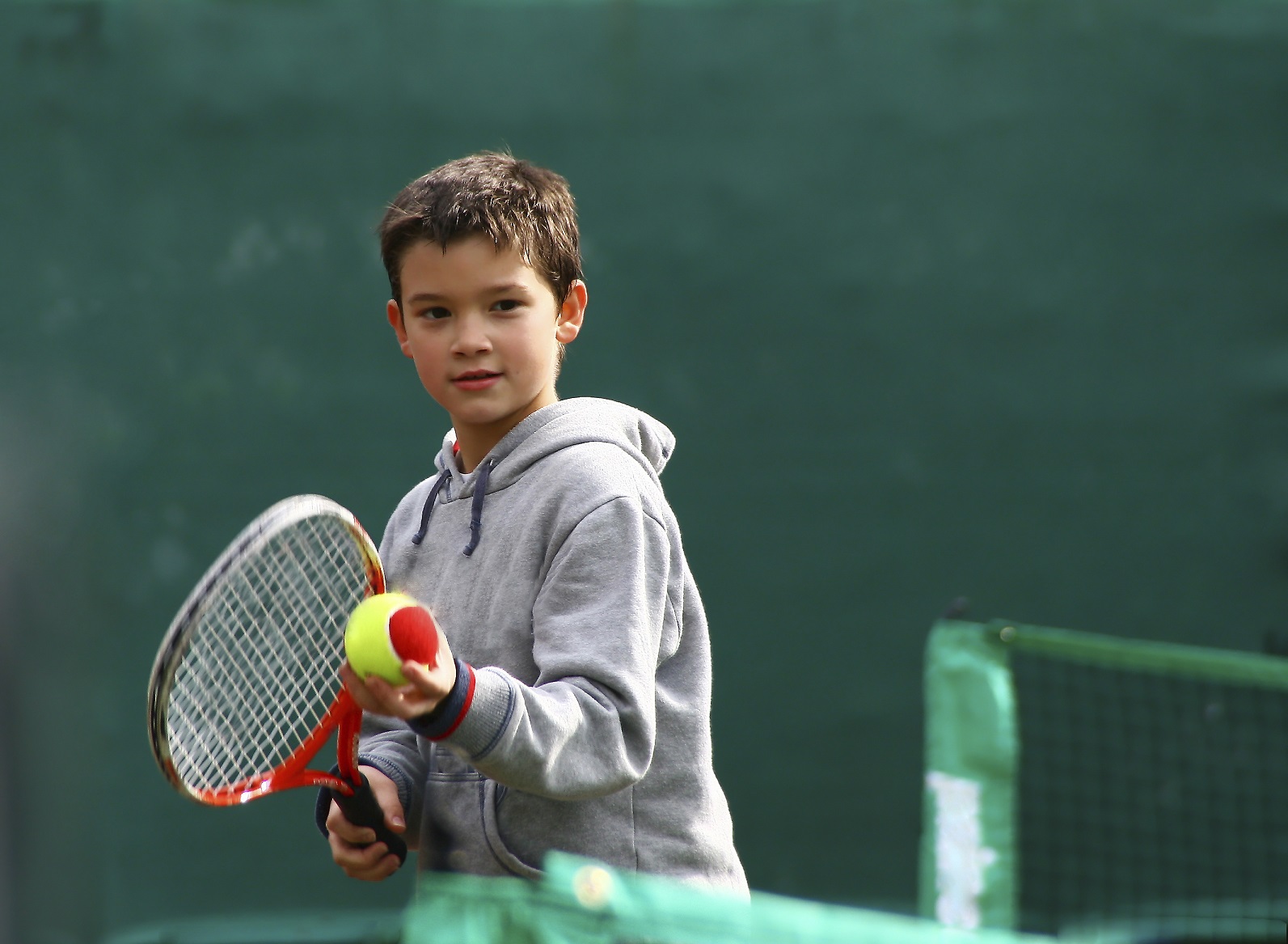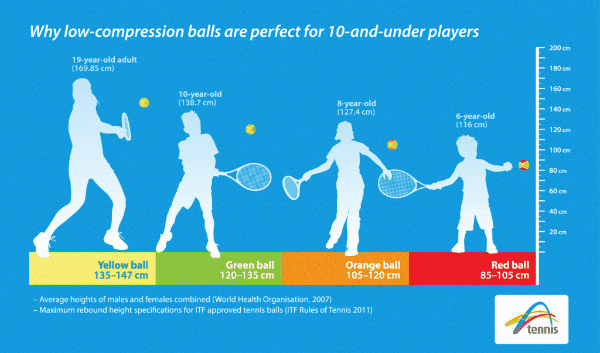Many sports have recognised that the needs and abilities of children are different from that of adults and have developed modified sports. Kanga cricket and AFL Auskick are some examples of other sports using modified programs.
Successful modifications to sports include:
- size of equipment
- playing area and goals
- duration of games
- team sizes and interchanges.
These modified games use equipment that better suits the size and ability of the children, smaller playing areas, goals that are smaller or lower, smaller teams and/or more interchanges.
So the question is, ultimately why do we modify tennis?
Ideally we modify tennis to closely resemble or replicate the professional game. We want kids to enjoy and love the sport, and develop to their full potential. Low compression balls allow for more hitting opportunities, more success and more fun.
With arguably the greatest tennis player of all time and 17-time Grand Slam Champion Roger Federer growing up and developing through modified tennis programs as a young child, why should your child be any different!
The right ball at the right time
In my experience as a tennis coach it is important that all tennis players starting at a young age between 5-12 years old uses the right ball at the right time. The bounce of the ball is critical, and one of the most important things in developing tennis players. This allows players to strike the ball in an optimal hitting zone between waist and shoulder height.
Players that have worked with the low compression balls at a young age usually develop into a more complete tennis player. This is a big advantage when competing on a national and international level from 13-18 years old.
The picture below shows that even at the age of 10 and under, the regular yellow ball will bounce above the head of an average 10-year-old player. This means that playing with efficient, realistic technique and tactics is very difficult, as players either have to:
- regularly take the ball early and play most ground strokes above the optimal striking zone (in line with, and above the head), and/or
- play well behind the baseline and take the ball late, waiting for the ball to drop
The slower Red, Orange and Green balls however are designed to bounce lower and move through the air slower to suit the height and motor skills of the player.
The right court size at the right time
The next important thing is to use the right ball on the right size tennis court. The court size should be relevant and realistic to the size of the player. Most children aged 10 and under will struggle to cover a full tennis court, meaning rallies are shorter, court position will be inside the baseline, and the use of advanced tactics is unrealistic. Footwork patterns are difficult to develop, as children have to use more steps to cover the court, affecting movement styles to the ball and in recovery. A fast and high bouncing ball also affects this. Approaching the net and volleying becomes an unrealistic tactic for small players on big courts because they take longer to reach an optimal net position because of their size and speed and are easy to pass or lob.
I strongly recommend the use of the right compression ball and court size to allow the players to develop to their full potential and give everyone a great experience with tennis.


